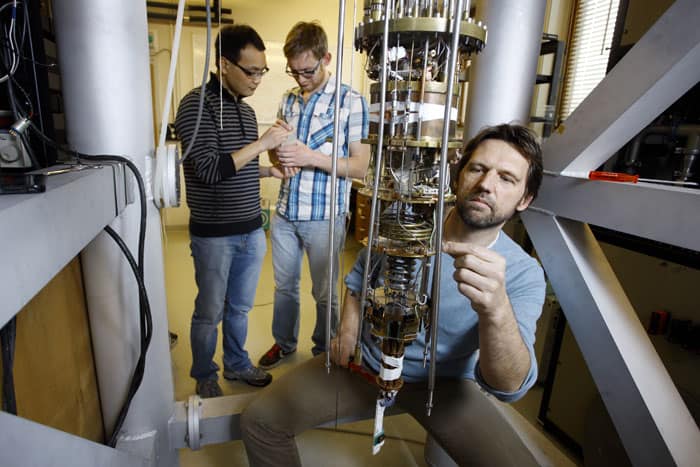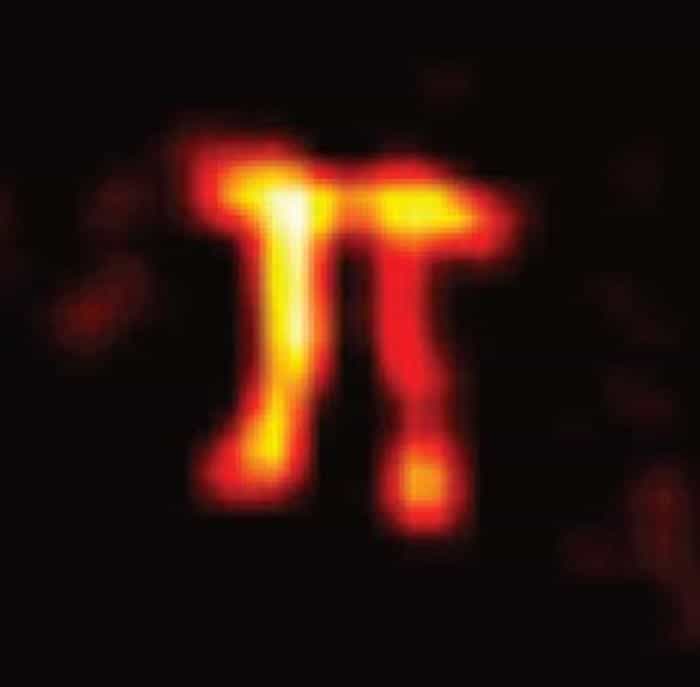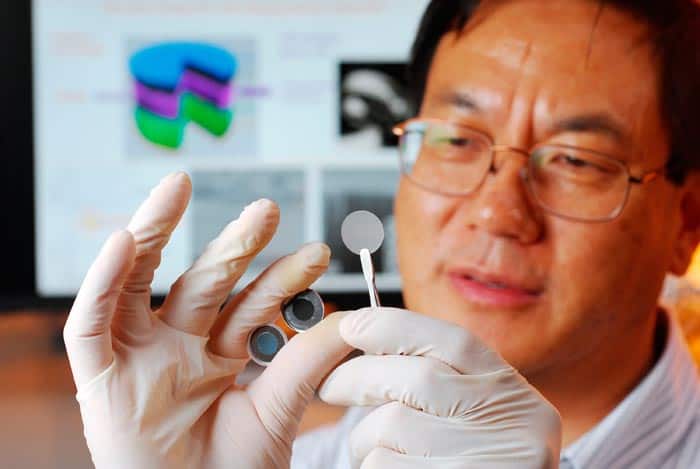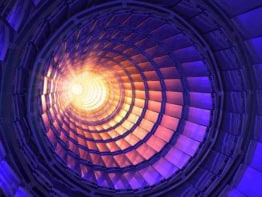The Physics World award for the 2012 Breakthrough of the Year goes “to the ATLAS and CMS collaborations at CERN for their joint discovery of a Higgs-like particle at the Large Hadron Collider”. Nine other research initiatives are highly commended and cover topics ranging from energy harvesting to precision cosmology
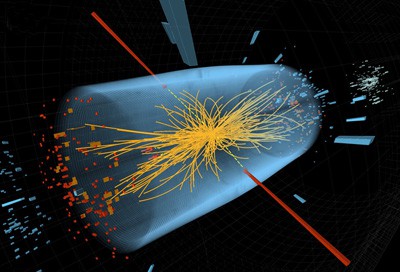
CERN discovers Higgs-like boson
If for nothing else, 2012 will be remembered as the year that physics hit the mainstream – at least for one glorious week in July when physicists working on the ATLAS and CMS experiments at CERN announced that they have discovered a “Higgs-like particle”. Camera crews and reporters from around the globe flocked to the Geneva lab where the announcement was made and the discovery led newscasts and graced newspaper front pages worldwide.
However, mass appeal is not why we chose the discovery as our breakthrough of the year. The July announcement was much anticipated because physicists have had the Higgs boson in their sights for nearly 50 years. Its discovery completes the Standard Model of particle physics – making it the most important physics breakthrough so far in the 21st century.
The Higgs boson and its associated field explain how electroweak symmetry was broken just after the Big Bang to give certain elementary particles the property of mass. The Standard Model does not, however, predict the mass of the Higgs, which had remained a mystery until July. That was when both CERN experiments announced that they had independently discovered a particle with a mass of about 125 GeV/c2. Crucially, both experiments were able to claim this figure with confidence levels of 5σ. Any finding that passes this statistical threshold is generally considered a “discovery” in the particle-physics community.
And if that were not enough, the CMS and ATLAS collaborations stand out because of the sheer scale of what has been achieved by their thousands of members over the past two decades. Starting in the early 1990s, when plans were first hatched for the Large Hadron Collider (LHC), physicists began thinking about how they could build detectors the size of small office blocks to capture and measure the multitude of particles produced when two protons collide at TeV energies. Some focused on how vast quantities of collision data could be stored and distributed to physicists around the world. Yet more began developing methods for analysing this vast and bewildering amount of information.
If both the ATLAS and CMS experiments had simply functioned as expected, that alone would have been worthy of a Physics World award. However, both have overachieved since they first started taking data in 2010. Indeed, current ATLAS spokesperson Fabiola Gianotti told us that the accelerator has produced 10 times more data than would have been expected by this time. “The experiments, the computing grid and the LHC accelerator are performing well beyond our expectations,” she says.
These are just a few reasons why both experiments have been able to home in on the Higgs after just a shade over two years of data-taking. In fact, the precise nature of the new particle is revealed by how it decays into other particles, which are then detected by the ATLAS and CMS collaborations. And while Physics World has been careful to call the discovery a “Higgs-like particle” – just as the collaborations themselves have done – evidence is now growing that the particle is a Higgs boson as described by the Standard Model of particle physics.
That idea is backed up by new analyses released by the collaborations at a conference in Japan in November, which was partially based on 8 TeV collision data that were acquired since the July announcement. Earlier this week, Gianotti told Physics World that the particle discovered is now being measured with increasing precision. “The Standard Model Higgs is in good health,” she says.
With 17 December marking the end of proton–proton collisions at 8 TeV, the LHC will collide protons with lead ions until 11 February 2013. That is when the collider will then be shut down for 24 months to allow engineers to upgrade both it and the main experiments for a subsequent run in 2015 at 13 TeV. In the meantime, both the ATLAS and CMS researchers still have a huge amount of data to analyse.
One important property of the particle that has yet to be resolved is its spin. The Standard Model predicts it should have zero spin, but it may have a spin of two (spin of one has already been ruled out). Both Gianotti and Joe Incandela – spokesperson for CMS – believe that this question could be resolved by analysing existing data, with Incandela adding that a measurement of the spin at a significance of 3–4σ could be forthcoming by the middle of 2013. While this would not be the 5σ “gold standard”, he believes it would be enough to convince particle physicists.
So what can we expect from ATLAS and CMS when the LHC is up and running at 13 TeV? Incandela looks forward to the first three-year run of data-taking at the higher energy and says that a combination of detector upgrades and higher collision rates will give physicists a better measure of just about every aspect of the Higgs. For example, scientists will be able to study rare decay channels that they cannot really see at 8 TeV. “That will fill in pieces of the puzzle that we don’t really know about today,” Incandela says. “Moreover, a Higgs below 130 GeV/c2 is what one would expect in extensions to the Standard Model such as supersymmetry, which would help to fill in a lot of the missing blanks we still have, including the origin of dark matter.”
Highly commended
So congratulations to the ATLAS and CMS teams. Now we turn to the rest of our picks for the top 10 breakthroughs of 2012. They are listed below in no particular order. The criteria for judging the top 10 breakthroughs included
- Fundamental importance of research
- Significant advance in knowledge
- Strong connection between theory and experiment
- General interest to all physicists
Majorana fermions
“To Leo Kouwenhoven and colleagues at the Delft University of Technology and Eindhoven University of Technology for spotting the first evidence of the elusive Majorana fermion in a solid.”
“Majorana fermions” are particles that are also their own antiparticles and were first proposed in 1937 by the Italian physicist Ettore Majorana. More recently, physicists have argued that Majorana-like quasiparticles could be lurking in materials with special topological properties. Now, Leo Kouwenhoven and colleagues have spotted the first hints of Majorana fermions at the interface between a topological superconductor and a semiconductor. Majorana fermions are expected to be impervious to environmental noise and therefore could prove useful in quantum computers.
Time-reversal violation
“To the BaBar collaboration for making the first direct observation of time-reversal violation by measuring the rates at which the B0 meson changes quantum states.”
Physicists have been waiting for almost 50 years for a direct observation of time-reversal (T) violation. Now, researchers analysing data obtained at the BaBar detector at the PEP-II facility at the SLAC National Accelerator Laboratory in California have done just that. The collaboration focused on transitions between the quantum states of the B0 meson and found that the transition rates differed. While T-violation comes as no surprise, its direct experimental measurement is an important verification of quantum field theory.
Galaxy-cluster motion
“To Nick Hand from the University of California, Berkeley and colleagues at the Atacama Cosmology Telescope (ACT) and the Baryon Oscillation Spectroscopic Survey (BOSS) for being the first to detect the large-scale motion of galaxy clusters.”
The motions of distant galaxy clusters can tell us much about how the universe formed and also shed light on the mysterious dark matter and dark energy. Some 40 years ago, the Russian physicists Rashid Sunyaev and Yakov Zel’dovich calculated that this motion could be observed by measuring a slight temperature shift in the cosmic-microwave-background (CMB) radiation. Now, Nick Hand and colleagues at ACT and BOSS have done just that in another triumph of precision cosmology.
Peering through opaque materials
“To Allard Mosk and colleagues at the MESA+ institute at the University of Twente for developing a new technique for seeing fluorescent objects behind opaque barriers.”
Much of modern medicine relies on the ability to peer inside the human body, with techniques ranging from X-rays to magnetic resonance imaging having been developed to do just that. However, as tissue is opaque to much of the electromagnetic spectrum – including visible light – doctors are limited in terms of what they can “see”. Now, Allard Mosk and colleagues have used a common effect called laser speckle to see micrometre-sized fluorescent objects through several millimetres of opaque material.
Room-temperature maser
“To Mark Oxborrow of the National Physical Laboratory, and Jonathan Breeze and Neil Alford of Imperial College London for building the first maser to operate at room temperature.”
Solid-state masers are extremely sensitive microwave detectors and could therefore be used in a wide range of telecommunications and imaging applications. Until now, however, masers have needed to be chilled to extremely low temperatures using liquid helium in order to work – making them impractical for most commercial applications. This could all change thanks to Mark Oxborrow, Jonathan Breeze and Neil Alford, who have developed the first maser to operate a room temperature.
Wiping data will cost you energy
“To Antoine Bérut, Artak Arakelyan, Artyom Petrosyan and Sergio Ciliberto of Ecole Normale Supérieure de Lyon, Eric Lutz of the University of Augsburg and Raoul Dillenschneider of the University of Kaiserslautern for being the first to measure the tiny amount of heat released when an individual bit of data is erased.”
Ever since James Clerk Maxwell mused over his hypothetical demon in the 19th century, researchers have been making connections between the theories of information and thermodynamics. In 1961 the German–American physicist Rolf Landauer argued that the erasure of information involves the dissipation of heat. Now, a sextet of physicists in France and Germany is the first to verify this in the lab – by using a tiny laser-trapped bead that flips between two states.
Entangling twisted beams
“To Anton Zeilinger, Robert Fickler and colleagues at the University of Vienna for devising a new technique for entangling photons using orbital angular momentum.”
The orbital angular momentum of a corkscrewing light beam is a quantity that had been largely ignored until about 20 years ago. Today, however, physicists are busy dreaming up new applications for this “twisted light”. They include Anton Zeilinger, Robert Fickler and colleagues, who have managed to entangle photons with orbital quantum numbers as high as 300 – more than 10 times greater than the previous record. As well as quantum computing, the new technique could lead to the entanglement of macroscopic objects and find applications in remote sensing.
Neutrino-based communication
“To a collaboration of physicists from the MINERvA experiment at the Fermi National Accelerator Laboratory and engineers from North Carolina State University and NASA Glenn Research Center led by Daniel Stancil from North Carolina State for being the first to demonstrate communications using neutrinos.”
If you want to send a message across the universe – or to a submarine deep below the waves – then neutrinos could be your best bet. Your message would be guaranteed to get there because the subatomic particles can easily pass through 1000 light-years of lead without being affected. The problem, however, is how to encode and detect a signal using particles that react very rarely with matter. A collaboration led by Daniel Stancil is the first to meet this challenge by using Fermilab’s NuMI neutrino beam and MINERvA detector to transmit data over the 1 km that separates the facilities. While the data rate was a sluggish 0.1 bit/s, the messages were received with a bit error rate of just 1%, showing that the principle of neutrino communication is sound.
Generating and storing energy in one step
“To Zhong Lin Wang and colleagues at the Georgia Institute of Technology for creating a new system that converts kinetic energy into chemical energy in a single step.”
How many times have you been caught out and about with a lifeless mobile phone? Instead of having to find a charger and electrical outlet, it would be much easier to charge your phone using your shoe. That is the dream of Zhong Lin Wang and colleagues, who have developed a new system that can harvest energy from footsteps or other motion and store it in a battery. While this concept is by no means unique, the team’s technology is the first to convert mechanical energy directly to chemical potential energy – bypassing the intermediate steps of converting mechanical energy into electrical energy that is then converted to chemical energy.
